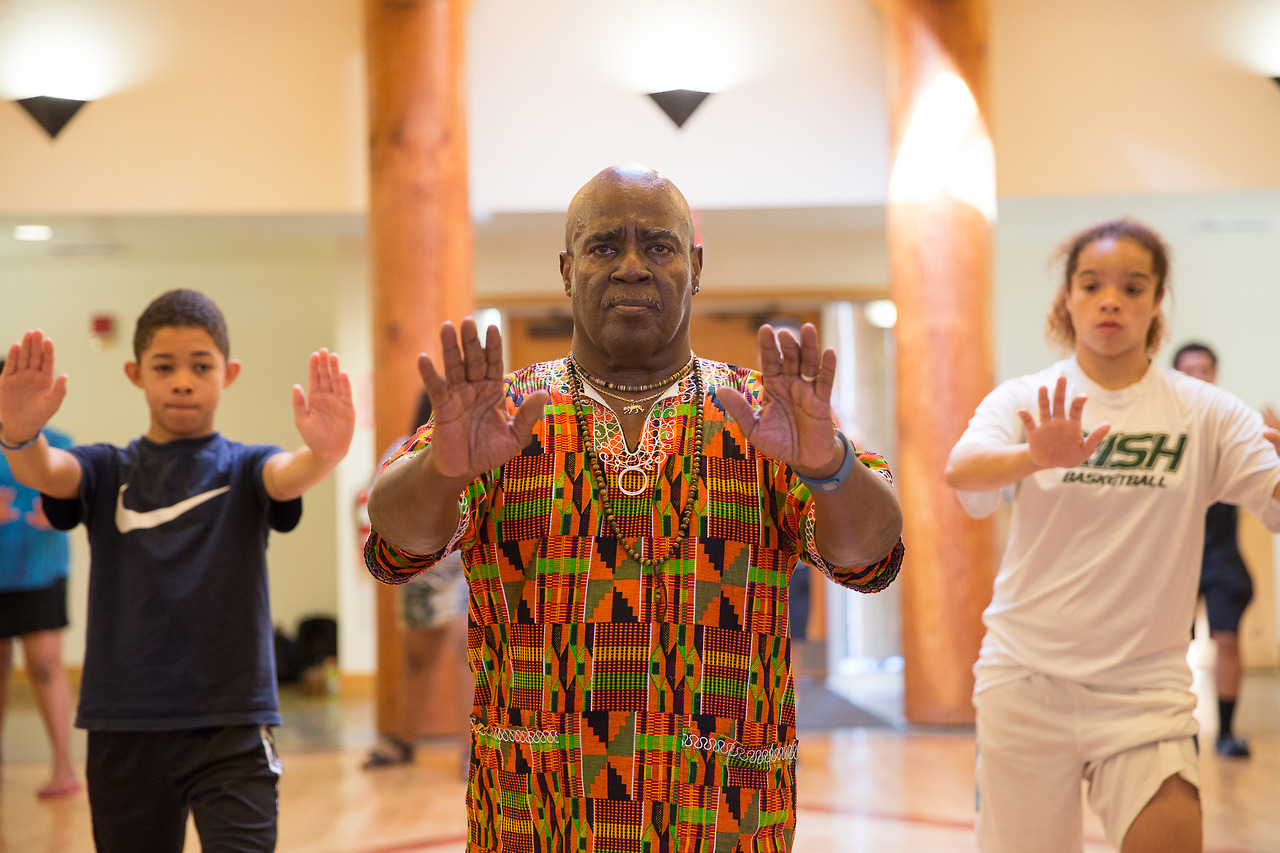Sometimes, to be the change you want to see, you have to first see the change you want to see.
Yesterday, the Urban League sent Intisar Abioto and me down to Eugene to cover the African American Rites of Passage Summer Academy, or AAROP. As a former Prospective Gent (of the now defunct Bridge Builders), I have a lot of expectations when it comes to programs like these. What I saw at Lane Community College killed every bit of skepticism I had. Watching multiple generations not just working together, but clearly enjoying each other’s company was chicken soup for the jaded Black soul.
To be honest, I wasn’t aware of other rites of passage programs outside of Portland. But then again, that’s the narrative of Black people in Oregon. Let the media tell it and you’d think Portland is the only place with Black people doing anything significant collectively.
My Eugene trip busted that myth wide open. AAROP has been going strong for 18 years. In fact, it was so successful that they branched out with Latino, pan-Asian, and Native American cohorts based on the same model.
When I met Greg Evans, a Lane professor and the founder of AAROP, it was easy to see why. He lives by the philosophy of not giving power to unimportant people. Specifically, he believes having strong self-esteem is the key to not letting overt and institutional racism in Eugene hinder people’s ambitions. Along with teaching at Lane and running AAROP, he’s helped build other youth programs and achieved political success as a Eugene City Councilor.
In 1996, he started AAROP because he saw a need in Eugene and Springfield’s dispersed Black communities. Initially, he tried to model it after Upward Bound and The Talented Tenth program. Today, he has settled into a simple, but thorough model, which includes morning tai chi with Karimu Kudura (pictured above), history and literature classes, and male and female empowerment sessions.
I was impressed by the structure but I’ve done the media dance with organizations before. I know they’re going to be on their best behavior when I show up. After a few years, I’ve developed a healthy bullshit detector.
Looking beyond the testimonial interviews, I observed something genuine. There were kids from all different Black experiences both learning and communing with each other. I’ve been to events where the kids have been coached to death and still couldn’t pull off what I saw yesterday. For that matter, I’ve seen adults who consider themselves leaders fail at it.
But these kids really wanted to be there. They interacted with their instructors as if they were family, even when they didn’t notice Intisar or me looking. In fact, some were family. For example, the Literature and female empowerment instructors, a married couple, have twins enrolled in the program.
For all the talk we do about other cultures applying the multi-generational concept, it was nice seeing a Black group put it into practice. And more importantly, it felt natural (If they were acting, they deserve an Oscar and a NAACP Image Award).
With all the program’s success, there has been some pushback. They’ve had to deal with both overt and institutional racism from Lane students, some staff and faculty, and surrounding community members. At one point, the Lane Vice President even tried to cut the program, citing lack of funds and questioning AAROP’s necessity. But Lane’s President and a prominent local politician believed in the program so much that they stepped in to prevent the move.
With so many narratives painting Black Oregonians as helpless victims, spending a day observing AAROP was refreshing. For some reason, we often downplay the strength of Black people living on the peripheries (i.e. outside of Portland). But we’ve been doing our thing in this sate since the lash laws. It takes serious self-esteem to persist and prosper when you’re constantly being bombarded with “poor, unfortunate Oregonian negro” stories, all while you don’t have a physical Black community to retreat to.
Amidst all this Portland-centric coverage of Black Oregonians, you have people literally scared to go too far east or south in the state. Shoot, some are shook venturing too far outside of Portland. And many look up to the sloganeers dominating the news for leadership.
Not surprisingly, a lot of these people leave disappointed or become casualties of groupthink. Fact is, you can’t manufacture contagious self-esteem and the media can’t create a solid foundation for you.
These are the things that allow us to be successful in the midst of the constructs. Yet, if we don’t see any examples, how are we supposed to know what it looks like? Why wouldn’t we just assume the Portland media darlings are the best we have to offer?
Well newsflash. Black people are doing big—make that huge—things throughout the state. Instead of gassing ourselves up on the Portland hype, we would be wise to get out to the peripheries and start taking notes.
*The above photo was taken by Intisar Abioto as a part of The Black Portlanders blog
**For a more in depth look at AAROP, check out the Urban League’s upcoming 2014 State of Black Oregon report

